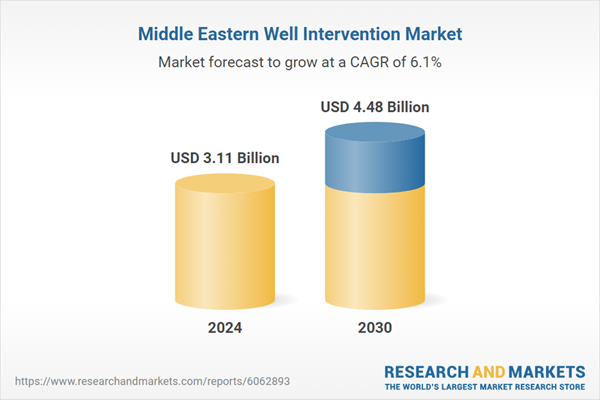Speak directly to the analyst to clarify any post sales queries you may have.
10% Free customizationThis report comes with 10% free customization, enabling you to add data that meets your specific business needs.
Key Market Drivers
Aging Oil and Gas Infrastructure
A significant share of the Middle East’s oil and gas infrastructure has been in use for decades. Iconic fields such as Saudi Arabia’s Ghawar and Iraq’s Rumaila have been producing since the mid-20th century. As these assets mature, operational efficiency declines and mechanical failures become more frequent. Challenges like tubing corrosion, reservoir degradation, and pressure drops are common in these older fields.Over 70% of the region’s oil production is derived from mature fields exceeding 30 years of operation. Well intervention services - such as mechanical repair, stimulation, logging, and zonal isolation - offer a cost-effective means of maintaining and enhancing production without the need for new exploration efforts.
This is particularly valuable in areas where infrastructure upgrades face constraints due to environmental, political, or logistical challenges. Moreover, the need to optimize production from existing assets aligns with global capital efficiency trends. As oil and gas companies focus on cost control, the strategic deployment of well intervention becomes increasingly important.
Technological advancements such as digital monitoring tools and real-time analytics have further improved the precision and impact of interventions, enhancing their attractiveness for managing aging assets across the Middle East.
Key Market Challenges
Harsh Environmental and Reservoir Conditions
The Middle East hosts some of the most technically challenging oil and gas environments globally, including high-temperature, high-pressure (HTHP) wells and sour gas reservoirs. These conditions introduce significant risks and complexities for well intervention operations.HTHP wells may reach temperatures above 150°C (302°F) and pressures exceeding 10,000 psi, which can compromise equipment reliability and operational safety. Similarly, sour gas fields containing hydrogen sulfide (H₂S) pose serious health and environmental hazards. Interventions in these environments require the use of specialized, corrosion-resistant materials and stringent safety protocols - substantially increasing costs.
Additionally, the desert environment adds logistical difficulties. Extreme heat, sandstorms, and remote locations impede equipment mobilization, impact workforce health, and extend downtime. These challenges demand highly skilled personnel and advanced technologies, which may not always be readily available in the region.
Key Market Trends
Digitalization and Smart Well Technologies
The Middle East well intervention market is increasingly driven by the adoption of digital technologies and smart well systems. Operators are leveraging digital tools to improve efficiency, minimize downtime, and enable real-time decision-making.Technologies such as real-time monitoring systems, downhole sensors, and advanced analytics facilitate continuous performance tracking and proactive intervention planning. This reduces both costs and operational disruptions. With real-time data, engineers can swiftly identify and address issues like flow restrictions or equipment wear.
Digital twin technology is also emerging as a planning tool, enabling simulation of well operations before execution, thus minimizing risk and improving procedural accuracy. In parallel, cloud-based platforms are being utilized to connect field crews with remote experts, enabling virtual oversight and rapid troubleshooting - particularly valuable in remote or harsh environments.
As national oil companies (NOCs) and international operators pursue operational modernization, the shift toward digital oilfields is expected to accelerate. In addition to enhancing efficiency, digitalization contributes to sustainability objectives by optimizing chemical usage, reducing rework, and lowering the environmental impact of intervention activities.
Key Market Players
- Schlumberger Limited
- Halliburton Company
- Baker Hughes Company
- Weatherford International plc
- National Oilwell Varco Inc.
- China Oilfield Services Limited
- Welltec A/S
- Oceaneering International Inc.
Report Scope:
In this report, the Middle East Well Intervention Market has been segmented into the following categories, in addition to the industry trends which have also been detailed below:Middle East Well Intervention Market, By Service Type:
- Logging & Bottomhole Survey
- Tubing/Packer Failure Repair
- Stimulation
- Sand Control
- Zonal Isolation
- Artificial Lift
- Fishing
- Others
Middle East Well Intervention Market, By Well Type:
- Vertical Well
- Horizontal Well
Middle East Well Intervention Market, By Application:
- Onshore
- Offshore
Middle East Well Intervention Market, By Country:
- Saudi Arabia
- UAE
- Qatar
- Bahrain
- Kuwait
- Oman
- Israel
- Rest of Middle East
Competitive Landscape
Company Profiles: Detailed analysis of the major companies present in the Middle East Well Intervention Market.Available Customizations:
With the given market data, the publisher offers customizations according to a company's specific needs. The following customization options are available for the report.Company Information
- Detailed analysis and profiling of additional market players (up to five).
This product will be delivered within 1-3 business days.
Table of Contents
Companies Mentioned
- Schlumberger Limited
- Halliburton Company
- Baker Hughes Company
- Weatherford International plc
- National Oilwell Varco Inc.
- China Oilfield Services Limited
- Welltec A/S
- Oceaneering International Inc.
Table Information
| Report Attribute | Details |
|---|---|
| No. of Pages | 122 |
| Published | April 2025 |
| Forecast Period | 2024 - 2030 |
| Estimated Market Value ( USD | $ 3.11 Billion |
| Forecasted Market Value ( USD | $ 4.48 Billion |
| Compound Annual Growth Rate | 6.1% |
| Regions Covered | Middle East |
| No. of Companies Mentioned | 8 |









